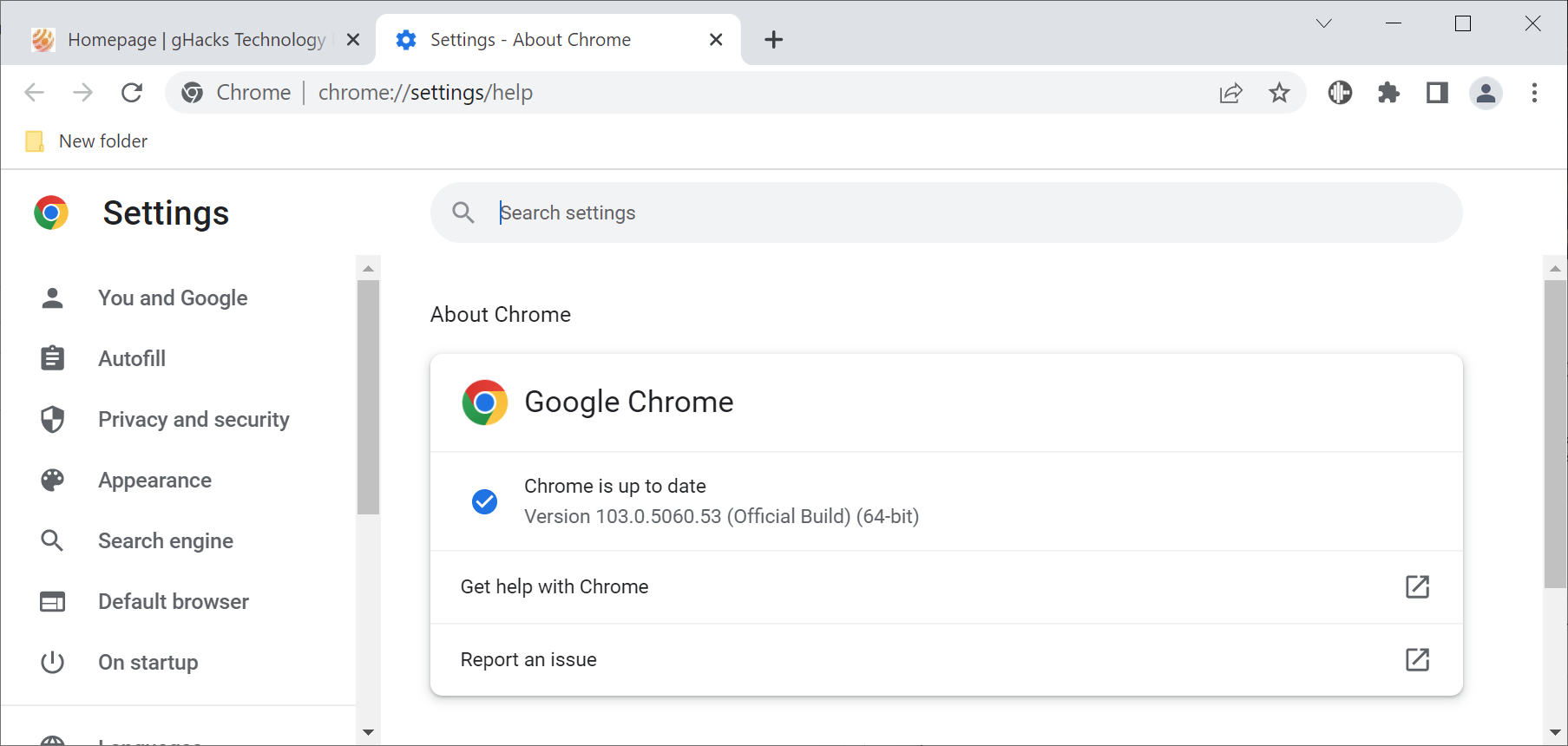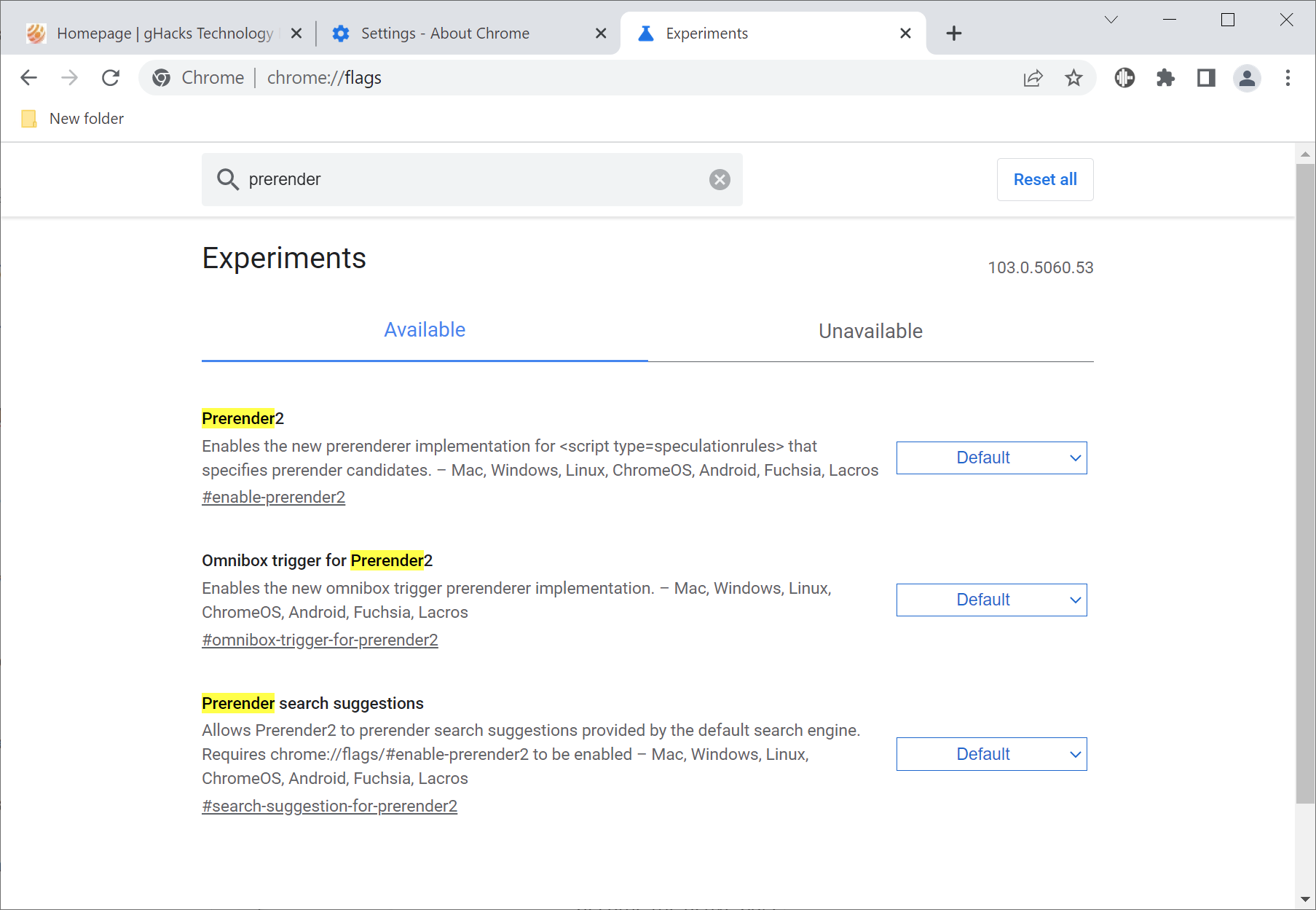Google Chrome 103 is now available. The new version of Google's Chrome web browser introduces support for a new prerendering technology, which Google believes will improve Chrome's page loading speed significantly.

Chrome 103 is already available for desktop systems. The browser updates automatically on most systems, but you may speed up the installation of the new update by loading chrome://settings/help in the browser's address bar or by selecting Menu > Help > About Google Chrome.
Chrome displays the installed version on the page. It checks for updates and will download and install any update that it finds.
Google fixed 14 security issues in Chrome 103, including one with a critical severity rating.
Chrome 103: Same-Origin Prerendering

The big new feature of Chrome 103 is that Google is prototyping prerendering again in Chrome to speed up the loading of web pages.
Google introduced a change in Chrome's prerendering behavior some time ago. Called NoState Prefetch, it was designed to be a replacement for the classic prerendering process of the browser. One of the core differences between the two prerendering technologies is that NoState Prefetch is not executing JavaScript or rendering parts of the page in advance.
Google highlighted back then that the new prefetching technology uses less memory than the old because of that. In a blog post on its Developer blog, Chrome Developers contributor Katie Hempenius pointed out that NoState Prefetch is using about 45 MiB of memory, while classic prerendering more than double that.
While memory usage is reduced, prerendering will not be used on low-end devices. Google provides no clear definition, but devices with less than 512 Megabytes of RAM are considered low end by the company.
With Prerender2, Google is aiming to restore prefetching functionality in Chrome, but without the issues, that included resource consumption, and privacy and security issues, of the previous system that it used.
We are working on a design to address these issues, which included undesirable side-effects, resource consumption, low hit rate, privacy and security issues, and code complexity.
Prerender2 launches in Chrome for Android first, but desktop versions of Chrome will have the new feature integrated in the future as well.
Adventurous Chrome users may enable certain flags in desktop versions of the browser to enable the functionality right away. Note that some features may not work as intended yet and that bugs may occur:
- Load chrome://flags/#enable-prerender2 and set the flag to Enabled; this enables the new prerender implementation.
- Load chrome://flags/#omnibox-trigger-for-prerender2 and set the flag to Enabled; this adds address bar triggers for prerendering.
- Load chrome://flags/#search-suggestion-for-prerender2 and set the flag to Enabled; this enables the new prerendering engine for search suggestions by the default search engine.
We reviewed Omnibox prerendering in Google Chrome previously already. Prerendering2 is trialed in same-origin contexts only at the time.
Other changes in Chrome 103
Chrome Platform Status lists several additions and changes to technologies in Chrome 103. Noteworthy from a user point of view is the addition of .avif files in Web Share and local font access.
Sites may use the new Local Font Access API to enumerate local fonts. Users have to give sites explicit permission to do so, which reduces the use of the new API for fingerprinting attempts.
Chrome 103 includes several changes that may be relevant to developers. The list is available here.
Now You: what is your take on these changes?
Thank you for being a Ghacks reader. The post Google Chrome 103 launches with new prerendering technology appeared first on gHacks Technology News.


0 Commentaires